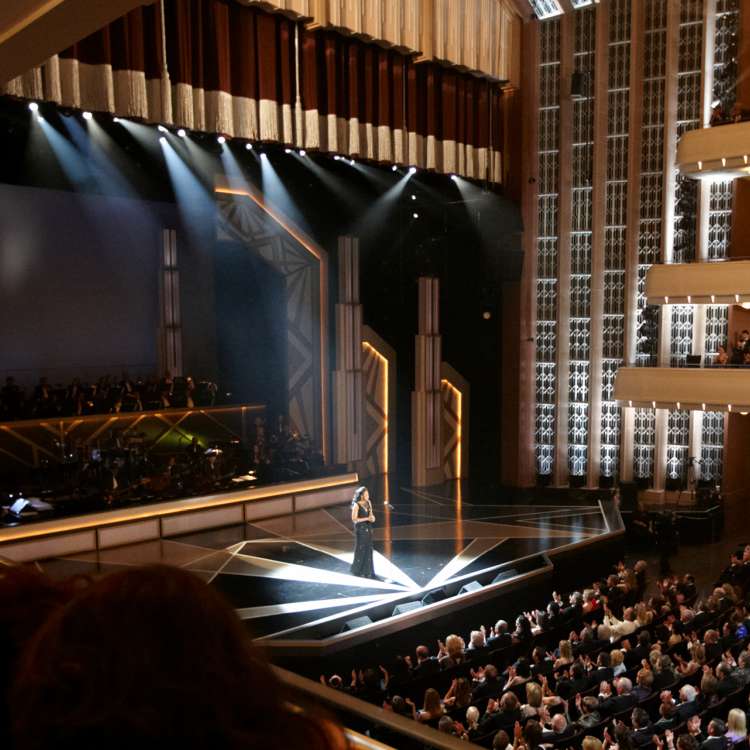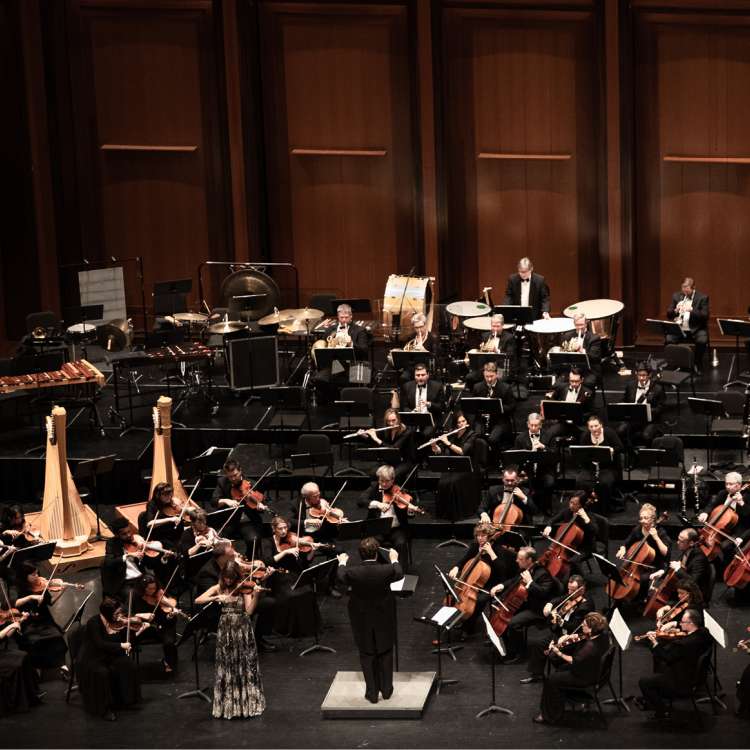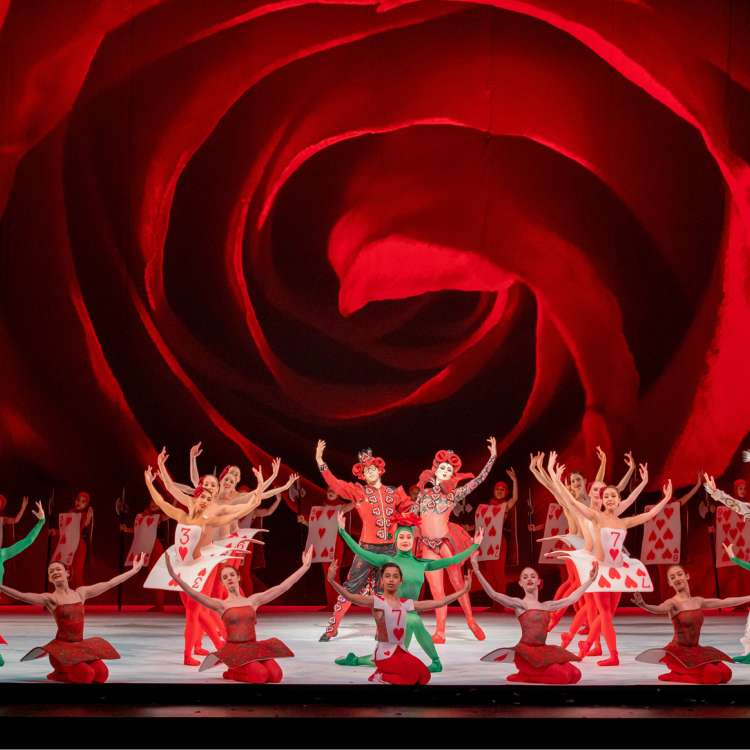“ARS GRATIA ARTIS”
40 percent. It’s a common figure used when discussing the business side of the performing arts. And in a city known for entertainment spectacle, one might think it’s the profit margin for a performance at the Smith Center.
On the contrary, in the performing arts world, 40 percent is the mere amount of cost covered by ticket sales when an organization like the Las Vegas Philharmonic or Nevada Ballet Theatre (NBT) performs.
“Your ticket is not a donation; it’s covering an actual portion of real costs,” Myron Martin, president and CEO of the Smith Center for the Performing Arts, explains. “There’s a misconception that because of how beautiful our facility looks and how well-maintained it is, that the Smith Center is just swimming in cash. In fact, we have to raise millions a year just to break even.”
For those of us not in the trenches building stage sets or producing or rehearsing for a performance, it’s hard to understand the costs to keep the performing arts alive in Las Vegas. Here’s a glimpse into that world:
The hard truth about hard costs
For both the Las Vegas Philharmonic and NBT, 40 percent is a good estimate for what ticket sales cover for each performance. The figure falls in line with much of what’s happening around the country as well.
According to the National Endowment for the Arts’ “How the United States Funds the Arts” report, on average, 40.7 percent of costs for nonprofit performing arts groups and museums is covered by “earned income,” primarily ticket sales. About 14.4 percent comes from interest and endowments, while the other 44.9 percent comes from corporations, individuals, and foundations, as well as local, state and federal sources.
NBT Executive Director and CEO Beth Barbre says funding the organization feels like running a “perpetual start-up. Once you finish one year, you’re right at it again.”
NBT typically puts on about 30 to 35 performances a year, most at the Smith Center. For NBT and the Las Vegas Philharmonic, hiring stagehands, production personnel, and paying rent are as much a part of the arts world as they are running a for-profit enterprise, Barbre explains. It cost the organization $750,000 to put on 12 Nutcracker performances last year, roughly $65,000 each performance, for a show seen as the “bread and butter” for ballet companies around the country. Costs for last year’s Dracula and Alice in Wonderland performances, more involved from labor and set design perspectives, came in at roughly $150,000 per performance.
Lacey Huszcza, executive director of the Las Vegas Philharmonic, says her tickets cover between 40 and 45 percent of costs as well. And without giving specifics, she says performances, which can vary tremendously in terms of the number of musicians required, range between $100,000 and $200,000 each.
The hobbyist doesn’t work here
Performer compensation can open a world of misunderstanding for some. Drilling down into the details of what musicians or ballet professionals make, you’ll find a wide range of estimates and living wage guesswork.
According to SalaryExpert.com, from the Economic Research Institute (ERI), the average base salary an orchestra musician in Las Vegas earns is just under $77,000 per year. That estimate likely includes other performers outside of the Las Vegas Philharmonic, too. ERI notes that median is about 6 percent higher than the national average, while the Los Angeles Philharmonic consistently ranks among the highest paying, with a base rate of $78,933 However, the SalaryExpert figures may seem a little modest, as other reports from the International Conference of Symphony and Opera Musicians show base pay for the Los Angeles Philharmonic above $150,000.
Pay specifics aside, the bottom line message is that these performers are working professionals who command a fair wage. They are not hobbyists filling in on the weekend.
“I would say one of the most common misconceptions is that people often think our musicians perform for free,” Huszcza says. “They are employed, highly-trained artists, who audition in a very complicated manner to get the job and become tenured, similar to a professor.”
Huszcza says about two-thirds of the orchestra is made up of Las Vegas residents. About a third travel in for shows, which brings on other costs. Relationships with local hotel operators help with those situations, she adds. Barbre’s team battles similar inaccurate perceptions about performer compensation.
“Our artists are professionals. They need to be paid. They need benefits…Their careers are short, too, a lot like athletes. They live in Las Vegas, but we recruit from all over the country,” she adds.
The NBT employs about 35 dancers on annual contracts. Having a school with more than 400 students contributes about 15 percent to its $5.6 million annual budget, Barbre says. After the roughly 40 percent that ticket sales cover, the remaining 45 percent needs to be covered by private donors, foundations, businesses, and individuals.
Fundraising and the art of relationship building
It’s no secret performing arts organizations lean on well-connected boards for relationships with donors and financial supporters. For Huszcza, it’s also a case of matching donor desires and dollars with the orchestra’s needs.
“Someone might want to make sure we have the best violin soloist coming to the orchestra. So, the money goes towards that…They may also want special access to the violinist, which brings them close to the art they love,” she says.
Other donors are passionate about education and want funds to go toward the Phil’s Music Van Program, which brings music to Clark County schools and senior communities and touches thousands of lives each year.
“I think you have to know who you are, what you do, and care about your audience and connect with them in a deep, meaningful way,” Huszcza adds.
For donors like Jerry and Janet Kohlenberger, contributing thousands of dollars each year to the performing arts is an extension of what they had done for over a decade on the East Coast.
Jerry, who recently completed an executive career in the petroleum industry and serves on the board of the Las Vegas Philharmonic, is also on the trustee board for the National Symphony Orchestra in Washington D.C. and was a past board chairman for the Wolf Trap National Park for the Performing Arts in Northern Virginia.
“We make that choice to spend for the arts,” Jerry says. “Others may spend their time and resources in other ways, but what I do think is that there needs to be that realization of what it really takes to support these performances.”
Janet appreciates the Philharmonic’s focus on education, a driver for why the couple supports the Phil. She enjoys how lectures and question and answer sessions with experts are incorporated into the performances. “They do an excellent job of bringing you into the time of the composer. You learn so much,” Janet says.
For Barbre, having nearly 50 years of history in Las Vegas has helped to establish deep relationships. NBT’s annual “Black & White Ball,” held in the past at Strip resorts such as Wynn Las Vegas and Caesars Palace, among others, is the primary fundraiser. “They’ve all been very generous to us,” Barbre notes.
For the Smith Center, each year the organization must seek sponsors to cover a roughly $6.5 million funding gap. To do so, it taps season ticket-holders for annual donations, asks ticket purchasers for extra donations at check-out, and offers sponsorships, ranging between $5,000 and $100,000-plus, on program materials and events.
A growing endowment fund will help to cover the majority of the needed $6.5 million in the future, Martin says. It started with a $50 million initial endowment from the Donald W. Reynolds Foundation, and the Smith Center is currently raising an additional $10 million, which will be matched by the Engelstad Foundation. Ultimately, the goal is to grow the endowment fund to $100 million by 2022, the Center’s 10th year of operation. With a conservative spending policy and expected 4 percent return, the Smith Center can then count on having $4 million of the $6.5 million it needs annually.
Public funding’s relatively small role
Huszcza emphasizes that public money from the National Endowment for the Arts (NEA), National Endowment for the Humanities (NEH), and state and local entities, only cover about 5 percent of the Philharmonic’s $2.4 million budget.
“The majority comes from individuals in the community who care about the arts and arts education within the city,” she adds.
Each year, the National Endowment for the Arts awards roughly 2,000 grants, with fund matching criteria tied to each. Ann Meier Baker, director of music and opera at the NEA, explained that the organization does not support groups directly, but grant applications are instead for specific projects or performances, which undergo a rigorous review.
With about $60 million available for grants each year, and the need to extend reach geographically and to a variety of types of art, grants of $10,000 or $20,000 seem small, but work to entice more funds, Baker explains.
“Because the National Endowment for the Arts’ grant decision-making process includes a very rigorous review by experts in the field, organizations that receive grants from the Arts Endowment often leverage those to attract other contributed income,” she says.
What we get back
The massive subsidy required to maintain the performing arts brings individual and community payback. Today, the NEA says there are more than 2 million people whose primary job is “artist,” and the arts contribute more than $800 billion a year in economic output, about 4 percent of the U.S. GDP, according to a U.S. Bureau of Economic Analysis report published earlier this year. That output is greater than industries such as construction, utilities, transportation and warehousing, and travel and tourism, and is only exceeded by healthcare and retail.
Russell Rosenblum, Chairman of the Board of local start-up Lexicon Bank, has also contributed thousands to local arts programs, including the Las Vegas Philharmonic. Moving from the DC area, he and his wife, Anne Mazzola, were season ticket holders for the Philharmonic and NBT and then began making annual contributions to both organizations and others. Mazzola describes how the performing arts grew from a hobby into a need for her and her family.
“It’s almost like a seduction. You take in a few performances, you get wowed by the interiors and the music…You go through all these emotions over a two-hour period,” Mazzola says.
It can be difficult to place a dollar amount on what the performing arts bring to the city. Art often reflects sociological or economic trends and issues of any given period. What’s gained from learning about our past and exploring our future through art can largely seem intangible, yet tangible dollars are what’s needed to make it all happen.
“We bring beauty to the world,” Barbre says, “and I think we certainly can use that at this time in history.”
Adds Huszcza: “Las Vegas is in a place where people are really looking for and craving community and connection…I think this completes our city in a way. We’re already an entertainment destination, but now we’re a city that meets so many other people’s needs.”



